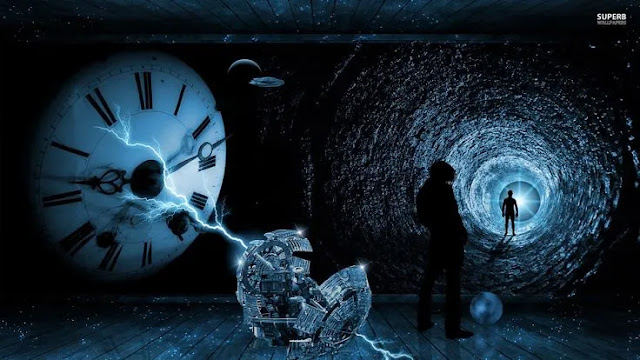Time travel is real and we are doing it right now.
If you came here with the question in your head, “Is
time travel possible?” the short answer is yes, time travel is possible, and
you’re doing it right now. We’re all hurtling into the future, at roughly the
same speed, one second per second. But that’s not what you’re expecting, is it?
Movies about time travel, where characters hop into some vehicle to fly into
the past or spin into the future… they’re certainly more captivating.
Einstein's theory of relativity
Thanks to Albert Einstein's theory of relativity, we
know that time and space are linked. According to this theory, the faster you
travel through space, the slower you experience time. Scientists have conducted
some experiments to prove that this is true.
The clock experiment on the plane
In one experiment, two clocks were used that were set
to exactly the same time. One clock stayed on Earth, while the other flew in an
airplane (going in the same direction as the Earth rotates). At the end, the
two clocks were compared and the clock on the fast-moving airplane was slightly
behind the clock on the ground. So, the clock on the airplane was traveling
slightly slower in time than 1 second per second.
Gravity and its influence on time
On the other hand, Einstein's theory also tells us
that gravity bends space and time, causing the passage of time to slow down. An
astronaut watching a clock fall into a black hole, for example, would see its
hands gradually slow down as the value of gravity increases. The second hand
would move once every Earth hour, then once every decade, and finally appear to
stop altogether. This is known as time dilation.
Gravity and GPS satellites
High up in the orbit of satellites, Earth's gravity is much weaker. This causes GPS satellite clocks to tick faster than clocks on the ground. But the difference is about 38 microseconds. That's a small amount, but if we didn't take that into account, the technology would be useless.
Traveling in time at high speeds
So, if we move at high speeds or are located at points
where the value of gravity is lower or higher, it is physically possible to
travel through time. For example: you go out and take a walk at a speed close
to that of light, when you return, years may have passed on Earth, but for you
only a few hours. For example: if you move at 99.995% of the speed of light,
for every second that passes for you, 100 seconds will pass on Earth.
Wormholes: a gateway to the past?
There are other considerations to time travel. The fascinating wormholes, theoretical “tunnels” through the fabric of space-time that could connect different moments or locations in reality with others. The problem here is, we’re not sure of their existence, plus there may be physical restrictions on using one.
We have no idea how to withstand the gravitational pull if we were to use a wormhole, which is not only hypothetical but also predicted to be extremely unstable. But lately it has shown appeal to the scientific community, some of whom are looking for solutions that would allow these time jumps.
Conclusion: What kind of time travel is possible?
In conclusion, time travel is real. Although it's not
exactly what you've probably seen in the movies. We can't use a time machine to
travel hundreds of years into the past or future. That kind of time travel only
happens in science fiction books and movies. But you are still traveling through
time. Now you also know that under certain conditions, it's possible to
experience time passing at a rate other than 1 second per second. Happy
traveling!






0 Comments